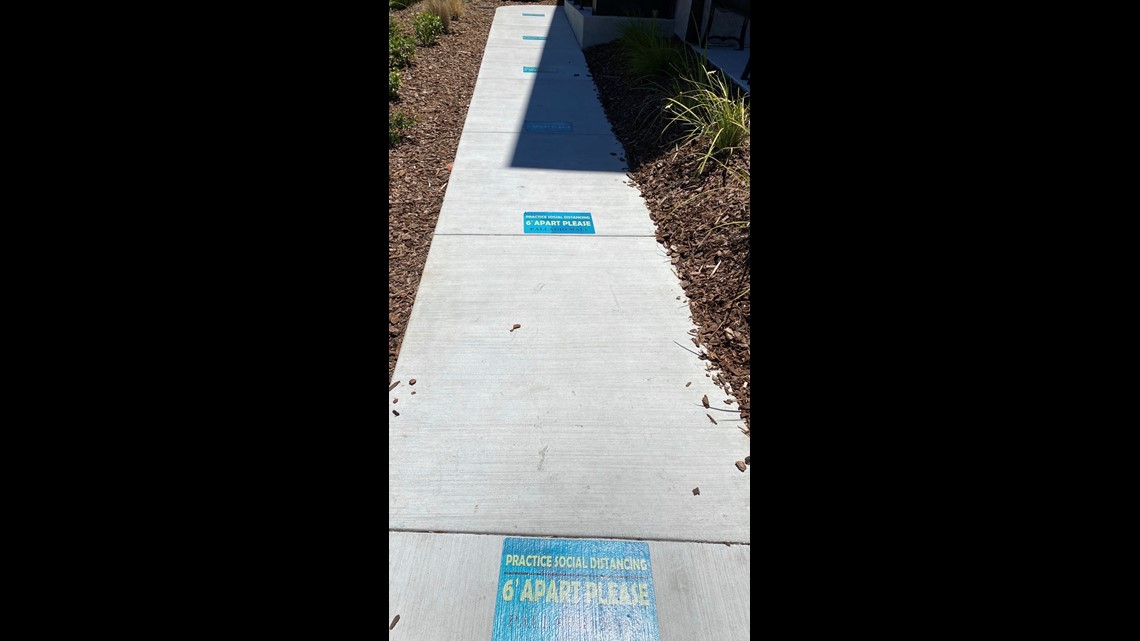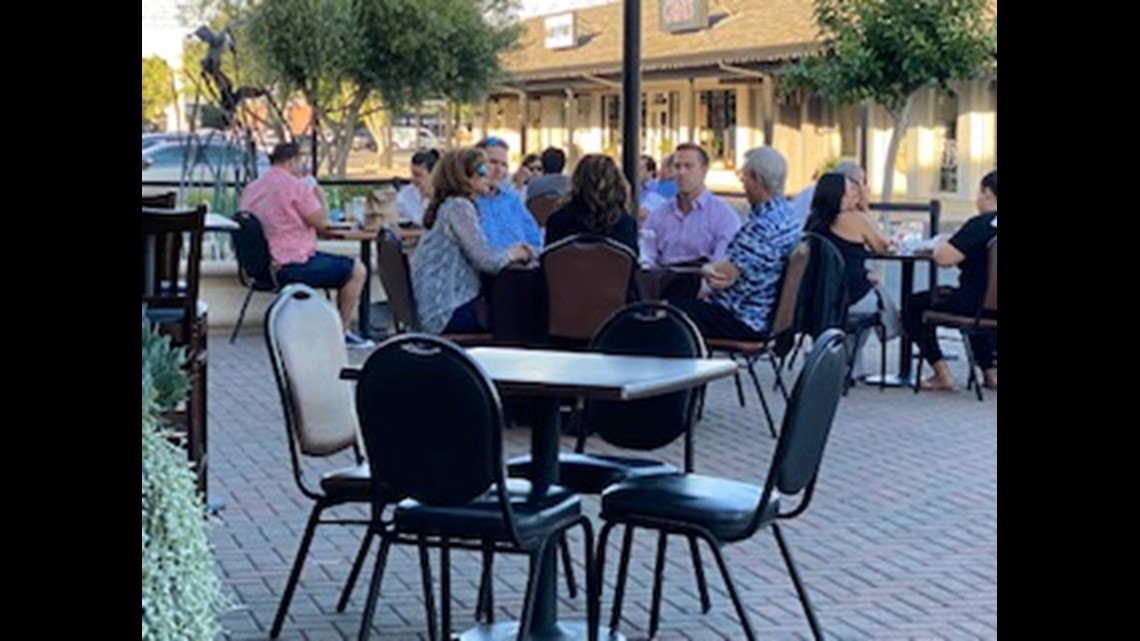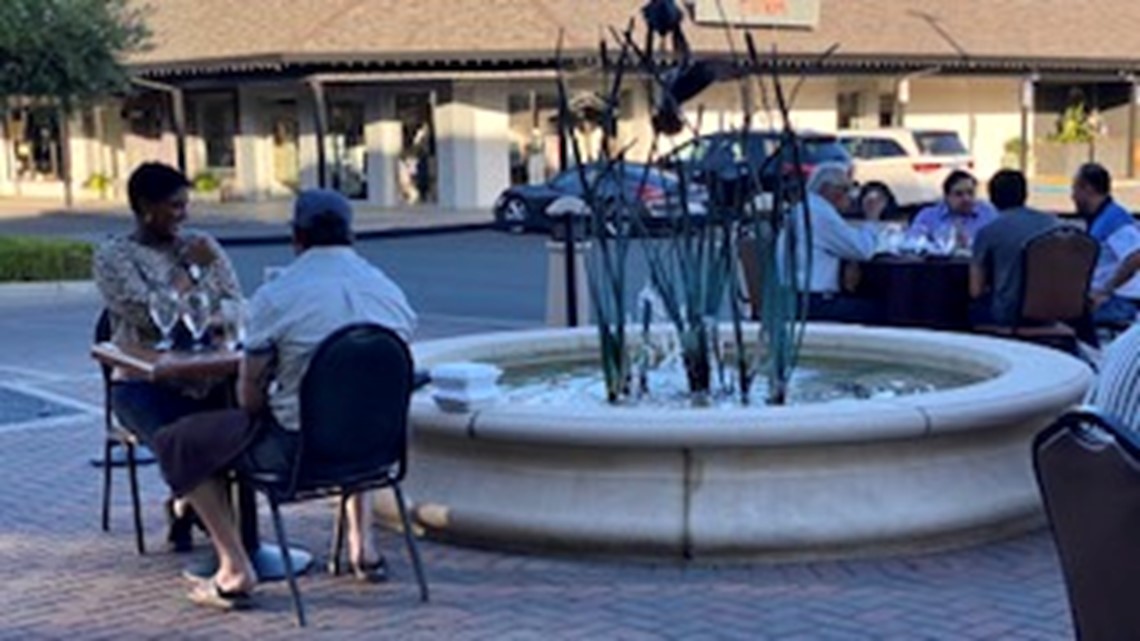SACRAMENTO, Calif. — The coronavirus has meant many changes to the local restaurant scene, but the next big adjustment is still underway.
As the hot summer months approach, restaurants are turning to outdoor seating to adhere to social distancing guidelines while still catering to the regular dine-in crowd.
"As a whole we are a city that loves to gather, and many times we are gathering over a pint with friends or over a table and a meal. It is what is part of our identity as a Farm-to-Fork Capital of America," said Erika Bjork, Sacramento Metro Chamber of Commerce policy officer.
Sacramento officials recently allowed for local businesses to expand in previously unused spaces, growing outward as indoor seating stays severely limited.
"Keep in mind our restaurants and our bars have such slim margins as it is to operate, that operating at a 50% capacity can still be incredibly devastating for many," Bjork said. "This is where we have seen our businesses have to be innovative and pivot."
The Farm-to-Fork Al Fresco Dining program in Sacramento means opening up areas not typically used for restaurants: streets, sidewalks, unused parking spaces and empty lots.


Midtown, for example, will soon get a test run of street closures, as 20th Street between J and K streets will be used for expanded restaurant space.
"We're doing almost a block-wide beer garden which is going to be incredible," said Michael Hargis, owner of LowBrau. "So it’s going to help us get back to our normal capacity numbers but still keep people at a safe socially distant space."
According to Midtown Association executive director Emily Baime Michaels, 20th street is just a jumping off point.
“We’re seeing cities across the country move to this as a resource, and really I would suggest that this is an opportunity for us to consider in the long run: how do we want our public spaces to be used?" Michaels said.
Not all of Sacramento County restaurants will be closing streets – Planning Manager for Elk Grove Antonio Ablog says there are no plans for that, but a citywide Emergency Ordinance provides a path to sidewalk seating.
In Stockton, similar issues have surfaced getting restaurants up and running at full capacity while still adhering to social distancing guidelines.
"A lot of [restaurants] didn't have outdoor seating in the Downtown area," said Michael Huber, director of the Downtown Stockton Alliance. "It was devastating, the loss of income for some of the businesses that weren't able to establish, you know, patio seating until the city decided to do a temporary order to allow them to set up in public places and allow alcohol consumption outside. So that's been a game changer."
Dining outside in Stockton isn't new by any means. Many restaurants are just expanding on what was already there.
The city of Stockton will be lenient when it comes to spreading out.
Huber says some of these renovated spaces will be empty lots and unused parking spots. Even alleyways will be converted, such as the one outside of Cast Iron Trading Co., which will become a little oasis for dining out.
Additionally, Wes Rhea, chief executive officer of VisitStockton, says that he has been hearing of more restaurants requiring reservations to cap the number of patrons at a restaurant at one time. He adds that VisitStockton will soon be contributing information on Al Fresco dining to its blog.


Both cities are working closely with Alcoholic Beverage Control [ABC] to provide restaurants and bars the help they need, hence why LowBrau is planing for a block-wide beer garden.
There are concerns that adhering to strict social distancing guidelines will be tricky.
"Every second Saturday in the summer, we bring almost 10,000 people to the block," Hargis said.
However, he argues that this means the restaurants and bars in Midtown have "a lot of experience on blocking off the street and doing street activations."
Even so, both Huber and Bjork agree that on a citywide execution level, it is very much trial and error at this point.
"I think it's gonna be kind of a slow ramp up," Huber said. "They want to see how it works and it'll be evolving as it goes along."
Stockton is looking to bring in entertainment and open up opportunities for different dining experiences. Huber could be live entertainment in key pockets around the Downtown Stockton area.
However, some problems that have arisen come from difficulties juggling the need to both cater to the 6 feet apart guidance and to maintaining a cool, relaxed environment for patrons.
As such, many restaurants are implementing innovative systems of natural shade, table umbrellas, and fans. Collin Wong, owner of Iron Horse Tavern, details the intricate plans for this summer.
"We currently use portable heavy duty swamp coolers that provide cooling fans for our patio guests as well as ceiling fans and patio shades to help block the sun from guest’s eyes at our Folsom location," Wong said. "Our R street location also uses these portable swamp coolers to help with the heat."
Iron Horse Tavern is one restaurant benefitting from street closures.
The Midtown location will be adding tables along 15th Street, which will be available to guests all day, everyday. Tables near the front entrance of the Folsom location are set to be added as well, and will be blocked off by crowd control stanchions.
Misters have also come up a lot when discussing seating in the summer months, but this is surprisingly not something in which all restaurants are interested. This is according to Jennifer Pappas, co-owner of Papapavlos in Stockton, whose restaurant has successfully beaten the heat in previous years.
"The thing about the Stockton weather is that when it's really hot, even the misters don't particularly help so much because they start to come down on the food," Pappas said.
Luckily, Stockton and Sacramento are blessed with the Delta Breeze, which can take temperatures from 100 degrees one day to 70 degrees the next (in every single interview with Stockton officials/restauranteurs, the Delta Breeze was singled out for its phenomenal cooling capabilities).
Even on days reaching the triple digits, diners can expect comfort on the most arid afternoons.
"Patio seating during lunch has been very popular as well as during dinner when the weather is below 90 degrees," Wong said. "I have noticed that guests are much more willing to sit outside on our patio when it’s hot than wait an hour for a table inside the dining room."


There's a delicate balance between ensuring the highest food quality and making guests comfortable.
Papapavlos is in the process of expanding its already existing patio seating. They have begun to offer seating around their quaint fountain area.
"It almost gives you like that European feel," Pappas said.
This "European feel" seems to be the overwhelming vibe for summer.
"We're going to wanna slowly ease into this because we don't want it to go away," Huber said. "That's the one thing is that we would like to keep–these little sections, like a European-style, outdoor café-style."
I don't know about you, but that makes me even more excited for summer.
"To a degree, when you look at the rest of the world, this is how they've been dining every day," Bjork said. "When you go to many other countries, most of the dining takes place outdoors...You see them in courtyards or you see them in alleys and you see them in many of these shared spaces. So...we're almost going back and embracing much of what our roots were when probably some of our early establishments even first opened here decades, if not over a century ago."
FOR NEWS IN YOUR COMMUNITY, DOWNLOAD OUR APP:
►Stay In the Know! Sign up now for the Daily Blend Newsletter



